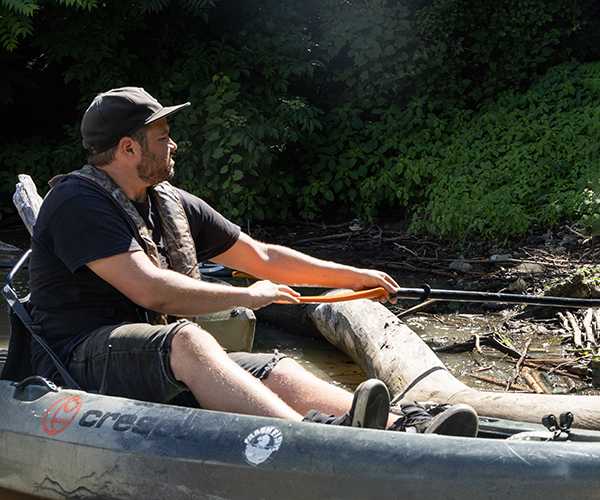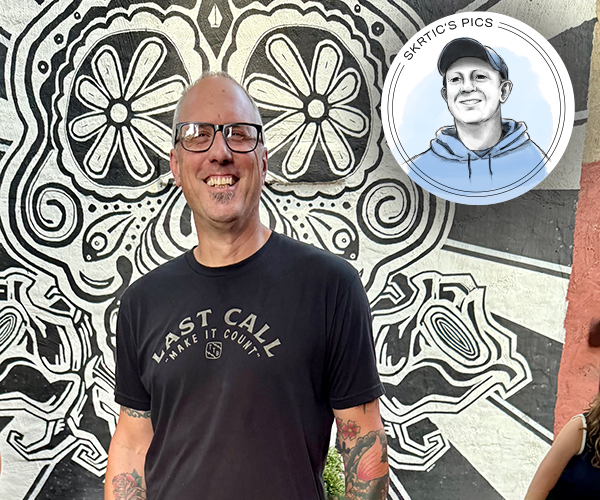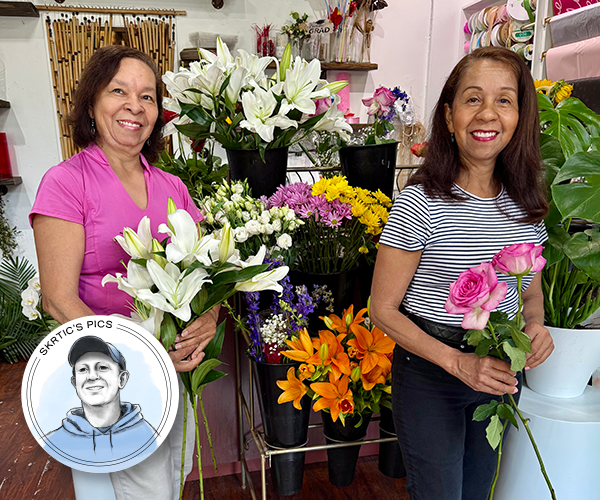On a February afternoon in 2016, a 13-year-old boy faced the Cleveland Community Police Commission at the Boys & Girls Club. Amanda King, the new youth advocate on the 13-member board, sat next to three officers as the boy quieted his nerves to ask two questions: How can you shoot at someone 137 times and go back to work the same day? Tamir Rice was a year younger than me, why did you kill him?
The officers stammered for answers, before the boy burst into tears. “It couldn’t be more cinematic, seeing this black boy weep in front of this line of officers,” says the 28-year-old. “My thought was that I want to be on the right side and to do what I have to to connect with the human feeling and emotion here in Cleveland.”
During finals week, the second-year Case Western Reserve University law student took study breaks to write a grant proposal for Shooting Without Bullets, an arts-as-activism program that empowers black teens to process realities of racial tension and violence. She promoted the program at Cleveland Metropolitan School District high schools, accepted applications and launched that June. “My healing, my protest, my resistance has always been through the visual arts — particularly photography,” says King.
She first recognized the stark contrast between herself and her peers during a photography class at her Pittsburgh high school. While they snapped photos of cows and fields, she captured headstones and hearses at a local cemetery.
“Just anything that could express my frustrations,” she says. “My work was powerful. I felt empowered without feeling threatened.”
Inspired by civil rights photographers such as Gordon Parks, who carried a camera as his weapon of choice against social injustice, King arms students with 35 mm cameras and a mission to make their 36 shots on a roll of film count.
“If we want the police to use some type of rational thinking when using deadly force, you — as photographers making a statement against this — aren’t going to take 5,000 exposures a day,” says King.
She spends about nine hours a week creating with a core group of 15 photographers, illustrators and hip-hop artists. Although Shooting Without Bullets doesn’t have a permanent home, King collaborates with other organizations such as the Cleveland Print Room, the Museum of Contemporary Art Cleveland and PechaKucha Night Cleveland to provide spaces to create and platforms to insert student voices into the public reform discussion.
In April, they premiered a documentary, Underexposed, which chronicles the everyday lives of 10 students from catching the bus to talking about their photographs at Spaces gallery. The film was created entirely by the students who starred in the film and recorded the hip-hop soundtrack.
“The whole purpose is to bring visibility to youth culture in Cleveland,” says King. “Black youth are often overlooked, their experiences are discredited, they are literally underexposed.”
At the Meeting of the Minds summit Oct. 23-25, Shooting Without Bullets showcases a year’s worth of work, including ready-to-wear jackets splattered with paint and visceral messages, objects arranged to honor victims of violence and burned black-and-white portraits.
While her students work in the foreground, King blends in behind the scenes as she moves from event organizer, curator, instructor and collaborating artist.
“I’ve taught them a culture of looking around your community, understanding the different levels and layers of issues and not just passively watching,” she says. “So many people are not ready to pass the mic — but gratefully I am.”




